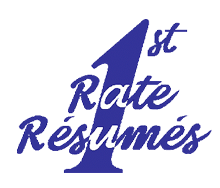 If you’re actively seeking work, and you’re confident that your Linkedin profile is up to par, great! That’s a first step. Your second step is to include a link to your Linkedin profile on your resume so that recruiters can easily find it. Yes, they will search Linkedin in they’re are interested in finding out more about you. There is nothing more frustrating than trying to find someone on Linkedin, especially when they have a common name, so make it EASY to be found. That’s the whole point of Linkedin.
If you’re actively seeking work, and you’re confident that your Linkedin profile is up to par, great! That’s a first step. Your second step is to include a link to your Linkedin profile on your resume so that recruiters can easily find it. Yes, they will search Linkedin in they’re are interested in finding out more about you. There is nothing more frustrating than trying to find someone on Linkedin, especially when they have a common name, so make it EASY to be found. That’s the whole point of Linkedin.
Case in point, if you’re ever looking for me on Linkedin, you’re going to have to wade through a lot people named Susan Geary before you’re sure I’m the person you are seeking. I tend to move around a lot, so location won’t help you. That’s why you should help people locate your profile. In my case, SusanGeary was already taken when I went to sign up for my custom url. So I chose Linkedin.com/in/1stRateResumes. Not only do I list it on my email signature, but also on my business cards. Few people will transcribe all those awful numbers and dashes that Linkedin assigns to you when you first set up your account. I’ve seen job seekers list the standard URL on a business card and not only does it look awful and unprofessional, it’s unnecessary. Linkedin allows you to change your URL to something shorter and easier to read, like your name! Plus it’s FREE!
Changing your Linkedin custom url is easy, just follow these steps:
1. Sign into your account and position your cursor over “Profile” at the top of your home page. Select “Edit Profile.”
2. Under your profile picture, click “Edit” next to the URL.
3. In the “Your Public Profile” URL box in the bottom right, select “customize your public profile URL.”
4. Type in the last part of your new custom URL in the text box. I recommend it be your name, or first initial with a last name. If you have a very common name, like Mark Kelly, then you’ll need to be creative. Perhaps something like “MarkKellyMBA” or “MKellySalesDirector”
Note that Linkedin will make all the letters in lower case, but they are not case sensitive. Therefore, on your marketing materials, such as your resume and business cards, I recommend you use CamelCase so that it’s easier for everyone else to read. You will not be allowed to use spaces, symbols, or special characters, but as I’ve demonstrated with my business name, you can use numerals.
And when it comes to listing it on your resume and business cards, keep it simple. You don’t need the http or even the www. To save space, just write Linkedin.com/in/YourName.
Your custom Linkedin URL listed in CamelCase format, will not only show you know your way around social media applications, you’ll also demonstrate you know a few marketing tips that even the most experienced graphic designers fail to use.
